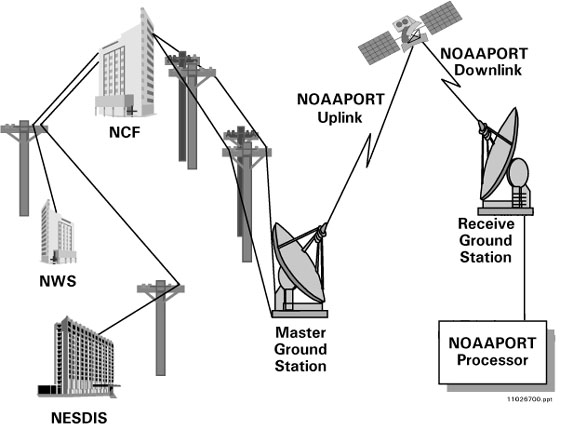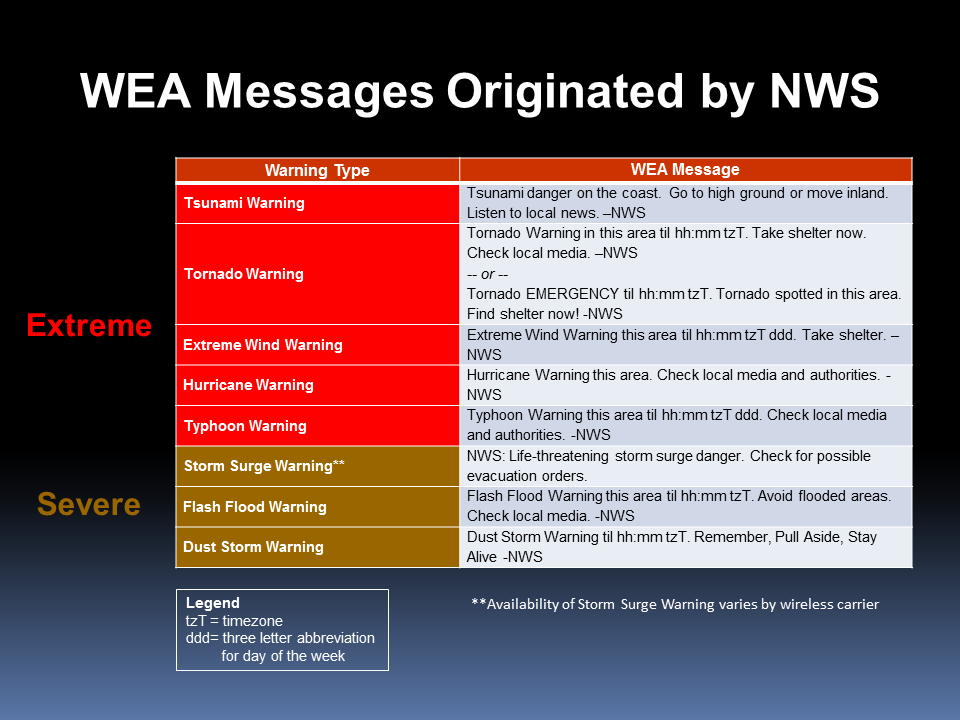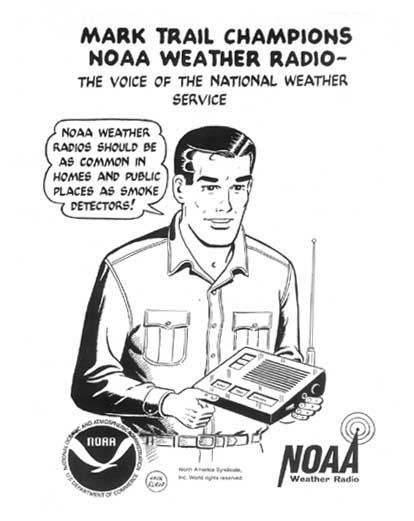Timely delivery of National Weather Service (NWS) weather warnings issued by our offices across the nation is critical to the NWS’ mission of the protection of life and property. In each one of the NWS’ 122 Weather Forecast Offices field offices, forecasters use the Advanced Weather Interactive Processing System (AWIPS), a weather forecasting data and display IT package, to create and distribute weather warnings. Once a forecaster hits “Send” on a warning, an advanced series of systems ensures that warning makes it to a number of outlets and to you.
A sampling of the services that deliver NWS warnings either directly to you, or to those that relay the warnings to you via the web, television and radio include:
Two of the most effective ways you get can warning information directly from the National Weather Service are through Wireless Emergency Alerts on your mobile phone, and on NOAA Weather Radio.
Once one of the 122 local NWS offices hits “Send” on a warning they’ve created, that warning is sent, via a complex network to the National Weather Service Telecommunication Gateway (NWSTG). These important messages are then sent to the Integrated Public Alert & Warning System (IPAWS), a modernization and integration of the nation’s alert and warning infrastructure. When NWS warnings reach IPAWS, they are pushed to commercial wireless carriers who broadcast the alert from cell towers in the threat area, straight to your cell phone.
More on WEA: https://www.weather.gov/wrn/wea
NOAA Weather Radio (NWR) is a nationwide network of 1025 radio stations covering all 50 states, adjacent coastal waters, Puerto Rico, the U.S. Virgin Islands, and the U.S. Pacific Territories, and broadcasting continuous weather information directly from the nearest National Weather Service office. NWR broadcasts official Weather Service warnings, watches, forecasts and other hazard information 24 hours a day, 7 days a week. Working with the Federal Communication Commission's (FCC) Emergency Alert System, NWR is an "All Hazards" radio network, making it your single source for comprehensive weather and emergency information.
 |
 |
 |
| The NOAAPORT operational flow chart. | Wireless Emergency Alert message types for mobile devices | An ad for NOAA Weather Radio |